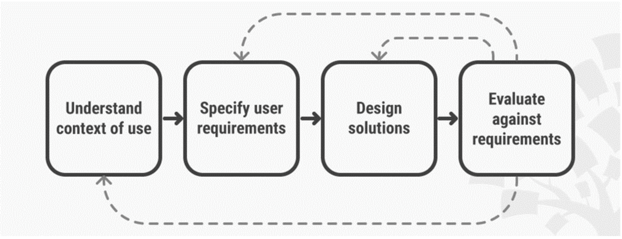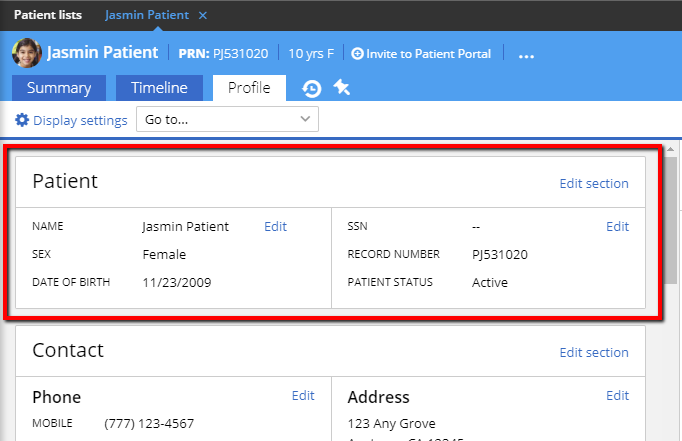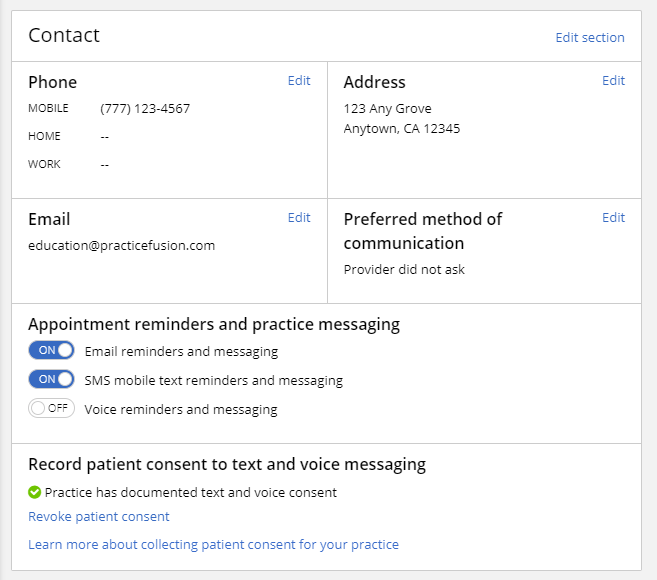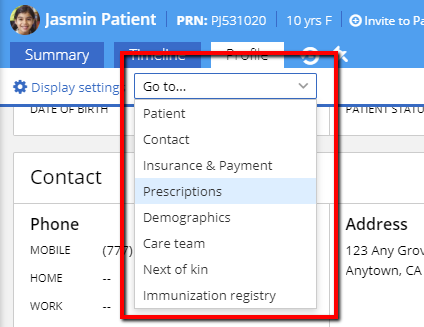Reducing Clinician Burnout Through User-Centered EHR Design

Clinician burnout burdens physicians with emotional exhaustion, depersonalization, and the loss of work fulfillment. It has serious and far-reaching consequences, ranging from reduced job performance and high turnover rates, to an increase in medical errors. The depression rate among physicians, which is connected to burnout, is significantly higher than in the general population.1,2
According to a 2020 Medscape survey, 42% of physicians report feelings of burnout.2 The National Academy of Medicine reports that number to be even higher—more than 50% of physicians in the U.S.1 It’s clearly an issue needing attention and an issue that the COVID-19 pandemic is only exacerbating.3 Here at Practice Fusion, we have the unique opportunity to help improve the clinician burnout problem through the use of user-centered design for electronic health records (EHRs). A user-centered EHR design may help reduce some of the pressures that contribute to clinician burnout.
In this article, we explore what clinician burnout is, how a user-centered EHR can help reduce its severity, and how Practice Fusion has addressed this issue with one of our latest user-centered design updates.
What causes clinician burnout?
Many different causes contribute to clinician burnout. According to the Medscape National Physician Burnout & Suicide Report 2020, 55% of physicians blamed the burden of bureaucratic tasks (such as charting and other paperwork) for their feelings of burnout, while 33% cited spending too many hours at work.2 The average physician works more than 53 hours per week, and, on average, nearly 16 hours a week (or 30% of that time), is spent on paperwork. For 32% of clinicians, that number climbed to more than 20 hours a week.4,5
The Medscape report also demonstrated that working with an EHR system is one of the most challenging aspects of a physician’s job.3,4,6 About one out of three doctors say that the increasing use of EHRs has contributed to the rise of burnout.7
In short, the strain of administrative tasks, long work hours, and frustration with health IT software is dragging physicians and staff down across the US. Building an EHR that is designed with physicians’ experiences as a core component of the design process is critical to making a difference.
How can user centered EHR design help reduce clinician burnout?
According to Usability.gov, usability is defined as “how effectively, efficiently and satisfactorily a user can interact with a user interface.”8 The Healthcare Information and Management Systems Society (HIMSS) defines EHR usability as a system that “is easy to use and effective. It is intuitive, forgiving of mistakes and allows one to perform necessary tasks quickly, efficiently and with a minimum of mental effort.”9
Researchers have found a direct connection between burnout and poor usability in EHRs.10 According to a study from the University of New Mexico, EHRs are largely to blame for the rise in clinician burnout seen in recent years.11 However, researchers have also found that better EHR usability is correlated with improved quality of patient care and decreased reports of negative outcomes for clinicians, such as dissatisfaction with work-life integration and poor interactions with patients.10,12
User-centered design (UCD) is an iterative process in which designers focus on a product’s customers and their needs in every step of the design process. UCD engages customers in each of its phases, creating products that are usable, accessible, and delightful for the people who use them. UCD results in a product based on an explicit understanding of its customers, the specific tasks they need to accomplish, and the environments they need to accomplish them in.13 By closely involving customers in the design process, UCD generates a product that is both safer and more likely to meet the customers’ requirements.13,14

User-centered design pathway14
User-centered EHR design revamps EHR usability. It directly tackles the aspects of EHRs that increase time spent on record-keeping and decrease their time available for patients.15 As a result, improvements to EHR usability may help improve clinician well-being and decrease clinician burnout.10,12
How has UCD improved usability in Practice Fusion?
Practice Fusion’s Design and Customer Insights team is dedicated to understanding the people who use our EHR and the different ways that they use it. We know our providers and their staff wear many hats on a daily basis. We aren’t the experts in patient care and running a medical practice – you are. Improving the EHR’s usability and functionality depends on truly understanding the day-to-day activities of your practice and addressing the real problems you face. As part of the UCD process, we do this through customer interviews, site visits, surveys, and conversations with our customer support teams.
The Practice Fusion design team listened to valuable customer feedback to guide improvements to the EHR in 2020. One major improvement we made last year was the launch of a redesigned Patient Profile tab, which is now live in your EHR. The Patient Profile’s usability has been transformed with a wide range of updates designed to make the product more helpful to users.
The new compact card design makes the Patient Profile quicker and easier to scan, with less scrolling. Patient information is also grouped by type so you can find what you need more rapidly and with less effort.

Consolidated contact information streamlines data entry, allowing you to record and update patient consent, contact information, and communication preferences all in one place. This feature is particularly helpful as many clinicians have expanded their virtual practice during the COVID-19 pandemic.

Updates to the navigation also make it easier and faster to find the information you need. A drop-down menu allows you to jump directly to any section of the Patient Profile.

The Patient Profile’s new customization features make its design even more user-centric. You can customize the Patient Profile’s layout to align with your specific practice’s workflow. Collapsible screens help to customize frequently used sections to simplify and speed up access, and a new drag-and-drop tool makes customization easy to execute.

We hope these user-centered design changes improve your Practice Fusion experience with the Patient Profile, making information easier to find and data entry more efficient for your practice. Our mission is to continue delivering, and improving upon, an EHR system that allows our customers to focus on what matters most: caring for their patients.
We will be sharing more updates based on customer feedback on the blog soon! Stay tuned for more on how your feedback helps shape the EHR.
References:
- National Academy of Medicine. Action Collaborative on Clinician Well-Being and Resilience. National Academy of Medicine website. Accessed January 26, 2021, https://nam.edu/initiatives/clinician-resilience-and-well-being/
- Kane L, MA. Medscape National Physician Burnout & Suicide Report 2020: The Generational Divide. 2020. January 15, 2020. Accessed January 26, 2021. https://www.medscape.com/slideshow/2020-lifestyle-burnout-6012460
- Butte N, MD, Sharp J. Provider Perspective: Finding Solutions that Address Physician Needs; Advocate Perspective: Finding Solutions Using Passion and Data. Healthcare Information and Management Systems Society (HIMSS) website. Updated January 22, 2021. Accessed January 27, 2021, 2021. https://www.himss.org/resources/physician-burnout-providers-and-advocates-perspective
- Kane L, MA. Medscape Physician Compensation Report 2020. 2020. https://www.medscape.com/slideshow/2020-compensation-overview-6012684#18
- 40+ medical doctor statistics for National Doctors Day. PatientPop website. Updated March 17, 2020. Accessed January 26, 2021, 2021. https://www.patientpop.com/blog/infographics/medical-doctor-statistics/
- Shanafelt TD, MD, West CP, MD, PhD, Sinsky C, MD, et al. Changes in Burnout and Satisfaction With Work-Life Integration in Physicians and the General US Working Population Between 2011 and 2017. Mayo Clin Proc. September 2019 2019;94(9):1681-1694.
- 5 causes of physician burnout and how to address them. PatientPop website. Updated April 30, 2019. Accessed January 26, 2021, https://www.patientpop.com/blog/running-a-practice/physician-burnout-causes/
- Glossary-Usability. usability.gov website. Accessed January 28, 2021, https://www.usability.gov/what-and-why/glossary/u/index.html
- Jason C. How to Boost EHR Usability Using a User-Centered Design Process. EHR Intelligence website. Updated November 25, 2020. Accessed January 26, 2021, https://ehrintelligence.com/news/how-to-boost-ehr-usability-using-a-user-centered-design-process
- Jason C. EHR Usability Leads to Better Patient Care, Work-Life Balance. EHR Intelligence website. Updated June 23, 2020. Accessed January 26, 2021, 2021. https://ehrintelligence.com/news/ehr-usability-leads-to-better-patient-care-work-life-balance
- Jason C. Study Shows Physician Burnout Directly Related to EHRs. EHR Intelligence website. Updated September 27, 2019. Accessed January 26, 2021, 2021. https://ehrintelligence.com/news/study-shows-physician-burnout-directly-related-to-ehrs
- Melnick ER, MD, MHS, Sinsky CA, MD, Dyrbye LN, MD, MHPE, et al. Association of Perceived Electronic Health Record Usability With Patient Interactions and Work-Life Integration Among US Physicians. JAMA Network Open. June 22, 2020 3(6):e207374. doi:doi:10.1001/jamanetworkopen.2020.7374.
- User-Centered Design Basics. usability.gov website. Accessed January 28, 2021, https://www.usability.gov/what-and-why/user-centered-design.html
- User Centered Design. Interaction Design Foundation website. Accessed January 28, 2021, https://www.interaction-design.org/literature/topics/user-centered-design
- Foster C. University of New Mexico Studies Physician Burnout Related to Electronic Records. U New Mexico Health Sciences Newsroom website. Updated September 23, 2019. Accessed January 26, 2021, 2021. https://hsc.unm.edu/news/news/university-of-new-mexico-studies-physician-burnout-related-to-electronic-records.html


